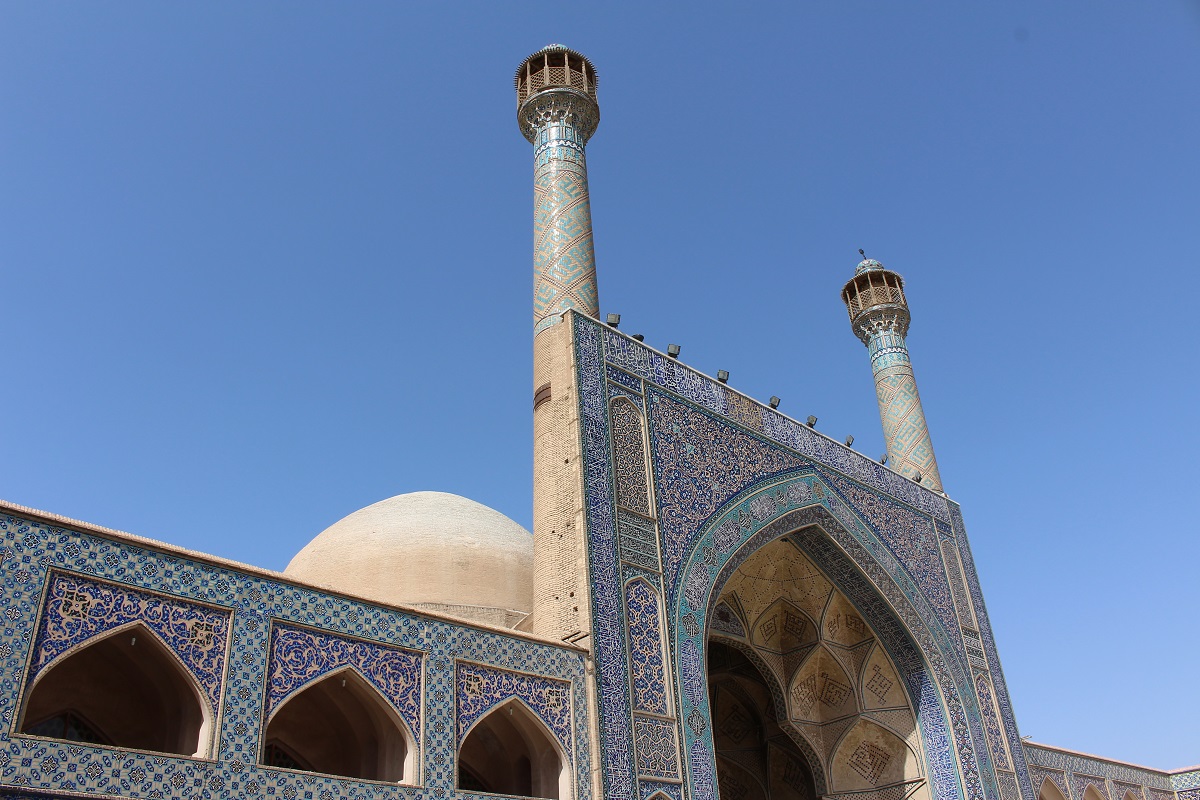This post is also available in:
![]() Deutsch
Deutsch ![]() Italiano
Italiano ![]() Português
Português ![]() Español
Español
The Jameh Mosque of Isfahan or Friday Mosque is a building in the historic center of the city. Located just over a kilometer north-east of the wonderful Naqsh-e jahàn square. This mosque, which covers an area of over 20,000 square meters, represents a masterpiece of Iranian religious architecture. This is because the structure, the result of continuous construction and reconstruction, contains about a millennium of architectural experiences. Furthermore, the building can be seen as a unique example of the evolution of Iranian mosque architecture over a period of time spanning over twelve centuries.

ONE OF THE OLDEST MOSQUES IN PERSIA
This is one of the oldest mosques in the country. News of the presence of a mosque in this place dates back to the 10th century AD under the rule of the Shiite Buwayhid dynasty (or Buyidis). However, it was in the 12th century with the Seljuk government that the mosque was rebuilt in the architectural style with a plan with four “iwans” or “ayvan” around the courtyard. Placing the four gates of the building face to face.
The “iwan”, an element that later became typical of Islamic architecture, is an entrance to a palace or a mosque formed by a mixed open and covered space whose entrance is topped with an arch. In this context, the Jameh Mosque of Isfahan is the first Islamic building that has adapted the layout of the courtyard with four iwans (Chahar Ayvan) to Islamic religious architecture. This characteristic was in fact typical of pre-Islamic Sassanid palaces.
In the Seljuk era, two extraordinary brick domes were also built. The south-west dome was built by Nezam al-Molk between 1086 and 1087. This is the first ribbed dome structure with double shell ever built in Islamic architecture. The north-east dome, smaller than the other, was built by Taj al-Molk in 1088. It represents a masterpiece of Persian architecture for its structural clarity and geometric balance. Due to these two innovations, namely the four “iwans” and domes, this building represents the prototype for a new aesthetic and architectural design of the mosque. This type of architecture later became prevalent not only in Iran. But also in Central Asia and in some cases also in the rest of the Islamic world.


A PROTOTYPE OF ISLAMIC ARCHITECTURE
The Jameh Mosque of Isfahan became the prototype of a distinct Islamic architectural style. This style represents an exceptional example of architectural and technological innovation developed over time during the restoration and expansion of the mosque which has evolved over the centuries. The building also offers remarkable decorative details that represent the stylistic developments of over a thousand years of Islamic art. This monument presents an overlap of architectural styles and decorative styles that form a cross-section of the art and architecture of the Abbasid, Buyids, Seljuq, Ilkhanate, Muzaffarids, Timurid and Safavid periods.


The various types of brick columns that with their arrangement form decorations of geometric shapes are very interesting. The symmetrical facades are richly decorated. But all the architectural decorations inside the building exhibit a collection of decorative arts that represent the artistic and decorative history of the mosque and the city itself. The mosque is inserted in the urban fabric of the city through numerous entrances that connect the religious building with the bazaar and the rest of the city.
The “mehrab” or “mihrab” in the mosque are very beautiful. These are semicircular niches that indicate the direction of the city of Mecca. Among these in the Shabestan is the Mehrab Uljayto. This is one of the most valuable stucco merhab from the Ilkhanate era, it was built in 1310 AD. Another beautiful stucco merhab from the Ilkhanate era is located along the covered corridor of the eastern entrance of the mosque. The Jāmeh Mosque or Isfahan Friday Mosque has been listed on the UNESCO World Heritage List since 2012.
This post is also available in:
![]() Deutsch
Deutsch ![]() Italiano
Italiano ![]() Português
Português ![]() Español
Español
